Alocasia Macrorrhiza is a remarkable beauty, featuring extravagant, colossal glossy green leaves with prominent midrib and ruffled edges. It is most commonly known as Giant Taro or locally named as Badiang, but it’s also called by several other names, including Elephant ears or Giant Upright Elephant Ears, due to its huge leaves and size. The fascinating Alocasia Giant Taro stands upright, pointing skyward, exhibiting arrow-shaped leaves and petioles emerging vertically from the stout upright trunk. This hardy Alocasia is a joy to grow to manifest jungle vibes, quite often found in Mediterranean gardens due to its low-maintenance nature. It is a rhizomatous evergreen perennial that brings a luxurious look to your home and garden because of its pronounced, vivid colored enormous leaves.
Allied Species: Alocasia Sarian, Alocasia Pink Dragon, Alocasia Lauterbachiana, Alocasia Silver Dragon, Alocasia Stingray, Alocasia Regal Shields, Alocasia Nebula, Alocasia Maharani, Alocasia Jacklyn , Alocasia Cuprea, Alocasia Black Velvet ,Alocasia Macrorrhiza Variegata
Related Products
Products | Name | Check Price |
Organic Perlite for Plants | ||
WONDER SOIL Organic | ||
Orchid Potting Bark Mulch |
Habitat & Ecology
Native to Southeast Asia, this plant needs specific conditions to flourish. Being a member of the Araceae family, it’s an herbaceous plant that needs a recurrent growth cycle.
| Botanical Name: | Alocasia Macrorrhiza |
| Family Name: | Araceae |
| Common names: | Giant taro, Giant Alocasia, Giant Upright Elephant Ears |
| Origin | Tropical Islands of South East Asia & Australia |
| Height | 12–15 feet (3.6m-4.5m) |
| Spread | 6–10 feet (180cm-240cm) |
| Temperature | 55° and 85°F (13 to 29°C) |
| Humidity | 60% and above |
| Light Need | Partial Sun |
| Watering | when 1/3 down of soil is dry |
| Soil Type | Loam (Silt), quick-draining |
| Soil pH | Acidic to neutral |
| Planting Time | Spring / Summer |
| Flower Inflorescence | White spathe and Spadix |
| Propagation | Seed, Basal Offset Division |
| Zones | USDA 9b to 12 |
Is Alocasia Macrorrhiza fast growing?
Under optimal conditions the Alocasia Macrorrhiza is relatively a fast growing Alocasia especially when grown out doors .Like many Alocasias, their stand-out feature is their stunning giant leaves that create a lovely indoor and outdoor display. The giant Taro can grow up to 12 to 15 feet tall and spreads 6 to 8’ feet wide in approximately 5 to 10 years. The Giant arrow-shaped leaves can grow 3 to 6 feet long and 2 to 4 feet wide. The size of the plant may be intimidating to many plant parents ;therefore choose a substantial space for this Elephant Ear to grow to its full potential such as living rooms, patio, sheltered garden, greenhouses.
Alocasia Macrorrhiza produces inflorescences (30cm+ from the soil line) featuring white spathe and spadix like Peace lily that can be pollinated to produce seeds. The plant produce blooms in late Spring and early Summer and these blooms can last up to five days.
What is Unique about Alocasia Macrorrhiza?
An exciting fact about the Alocasia Macrorrhiza plant is that this ornamental houseplant is also an edible root vegetable. For a long time, it has been harvested as a crop for potato substitutes in areas where potatoes cannot grow. Many locals consume them as vegetables or snacks like taro chips and fries. Moreover, stem pith is also edible, which is usually boiled and later dried and ground into flour(starch powder). The rhizomes and stems of Alocasia Macrorrhiza are cooked (usually boiled) before eating to remove calcium oxalates ( poisonous if ingested).
How do you take care of Alocasia Macrorrhiza?
Alocasia Macrorrhiza is an easy to care for houseplant and for this reason it is sometimes referred as hardy Alocasia. Your giant Taro will thrive if offered the right light and humidity levels, warmth, and potting mix. If you successfully want to grow this plant at home, the only key is to imitate their intrinsic rainforests as closely as possible.
Because of their habitat and selective nature, Alocasias need proper care and attention; however, Alocasia Macrorrhiza is bit forgiving and is not fussy or a drama queen like Jewel Alocasias. In addition, its tropical origin makes it prone to specific environmental conditions where it grows well.
If you are a beginner and confused about the care of Alocasia Macrorrhiza, keep reading to learn how you can care for this enormous exquisiteness at home.

Initial Care at Home
Once you have decided to bring this luxurious beauty home, you should first quarantine it from other plants at home. The reason for isolation is to see whether your new plant has any pests or diseases, and it shouldn’t upset or infect other plants in your collection.
Check your new family member for pests and infections; the best practice is to shower it to remove any pests. Also, remember not to repot the plant immediately; give it time to adjust to the new environment. If you repot the plant instantly, it will go into stress which can affect its growth.
As the Alocasia Macrorrhiza requires specific conditions to thrive, ensure to provide all the necessary arrangements for your new plant.

Watering
Like its other relatives (Alocasia Macrorrhiza Variegata), Giant Taro likes moist soil but doesn’t leave it in wet and soggy soil. In some instances, the plant can tolerate some standing water because of its natural habitat but keeping it in that condition for a long is not a great idea. It can cause collapsed base, yellowing leaves, moldy soil and root rot.
Although the Giant Taro is a water-loving plant and needs 0.8 cups of water every 9 days if planted in 5.0 inches container. Only water the Elephant ear when the top 2 inches of the soil dry in a 6-inch pot or soil dries down the 1/3. Make sure to reduce this further in the Autumn and Winter when the plant is dormant.
Please use distilled lukewarm water for Giant Taro as their roots are quite sensitive to sudden temperature variations. If using tap water, please keep it for 24 hours to let Chlorides and Fluorides evaporate as they will gradually build up the salts in the soil. Rain water is best for this plant; if you live in a place with a lot of rain, preferably use it to water the Elephant Ear.
Avoid underwatering or overwatering, as the plant won’t stand any inconsistent watering. Underwatering, your Alocasia Macrorrhiza, may lead to the plant’s stunted growth, browning leaf edges or yellowing leaves.
You can adjust the watering frequency of the plant depending on the season and different situations.

Sunlight Requirement
The partial sun or shade is ideal for the Alocasia Macrorrhiza to grow. Its gigantic leaves are susceptible to scorching under intense direct sunlight. Bright yet indirect lighting is required for this Elephant Ear plant. It can be exposed to direct morning or evening sunlight for a couple of hours daily. The sun will be less harsh in the morning, so placing it outside for a few hours will be beneficial.
If you have placed it indoors, choose a spot such as an east or north-facing window where it can get indirect bright light. For outdoors, choose a sheltered or shady spot to save its beautiful leaves from direct sunlight and strong winds.
Similarly, Alocasia Macrorrhiza Variegata plants can tolerate low light but will not thrive in low-light circumstances. Its enormous, exquisite leaves may turn yellow in too dark areas. Additionally, it will slow down its growth and raise the possibility of root rot as the plant won’t be able to photosynthesize appropriately and consume all the water. You can also install grow lights to provide an even distribution of light if you don’t have bright spots at your place.
The light requirement of Variegated Alocasia Macrorrhiza is between 10,000 to 20,000 lux. The variegated leaves of Macrorrhiza Variegata may need a brighter light for a more extended period during the day because the white variegated portions of leaves don’t have chlorophyll and will not photosynthesize to produce energy. Therefore, the green leaves may need to work longer to produce the energy for the plant to thrive.

Humidity and Temperature
Regarding humidity, it’s imperative to understand that Alocasias are very sensitive to humidity and needs certain levels to thrive. Therefore, be very watchful to provide the right humid conditions. For example, the giant Taro loves high humidity, which should be 60% and above.
These levels are not difficult to achieve, but the environment gets too dry at times, and you must use certain practices to attain the required level and requirements. When the humidity falls below 60%, you can mist the plant leaves from time to time, or the best option is to turn on a humidifier near the plant. You can also group your elephant ear with other plants to accomplish the required humidity.
Coming to the temperature, the Alocasia Macrorrhiza loves temperature that is between 55 degrees Fahrenheit to 85 degrees Fahrenheit. As a tropical plant, it prefers a warm environment and doesn’t grow well if the temperature falls below 50 degrees Fahrenheit.
If you have placed the plant outdoors, bring it in when the temperature drops. Also, put it in areas at home where the temperature is not fluctuating and avoid the spaces such as near heaters and air conditioners.
You will see how your plant flourishes if it gets the correct humidity and temperature.

Soil Requirements:
Since the Alocasia Macrorrhiza loves moist soil that doesn’t get wet and soggy, the best soil for the plant is the one that is well-draining, aerated, and retains enough moisture.
The soil should also be rich, fertile, and have the correct PH, but how to meet the soil requirements for Alocasia Macrorrhiza? You can make a standard and perfect potting medium for your giant Taro at home using specific components.
You can use the following ingredients for making a perfect aroid mix.
- 25% of orchid bark
- 25% of coir,
- 25% of Perlite,
- 10% of Horticultural Charcoal
- 10% of worm castings
A combination of the above components will make a well aerated and permeable soil. This potting medium also helps the plant to breathe by allowing the oxygen to travel into the plant’s body. Also, the mix helps filter out the soil impurities and maintains the PH level (5.7 to 6.3).
Besides that, you can also choose various potting mixes available in the market such as:

Repotting Giant Taro
Alocasia Macrorrhiza is a fast grower, and it can outgrow its container at some point, but it doesn’t happen that often, and you have to report it every 2 years or so. So when you see that your plant has outgrown the current pot, it’s time to repot it.
The best time for the repotting is spring, as it’s an active growth season. Always use one size-up pot as using too big a container will cause the plant to stress out and increase the risk of overwatering and suffocating the roots.
Pro Tip
If you are planning to repot your plant, it’s a good idea to water it 24 to 48 hours ahead to minimize the transplant shock. Watering also helps soften the soil, making it easier to remove the plant from its current container.
Step-by-step guide for repotting:

Propagation of Alocasia Macrorrhiza
Propagation is the process of increasing the plant population. If you want to increase the number of plants at your home, propagation is the easiest as well as cheapest method. The best time to propagate your plant is in spring.
Since there are various methods to propagate your giant Taro, here are a few;
Propagation through Basal Offset Division
Basal offshoots (aka suckers or rhizomes) divison is most common and easy propagation method of Giant Taro. Alocasia Macrorrhiza basal offsets can be divided from the mother plant once they established enough root systems.
Propagation through Seeds
Although it’s rare to see hanging seed pods on the Alocasia Macrorrhiza as it produces inflorescences occasionally, you can still take advantage of those seeds. However, this is less successful and time taking propagation method.
Propagation through Bulbs
Alocasia Macrorrhiza Variegata plants develop bulbs attached to their roots that can be used to produce new Alocasia plants. You can dig around the potting soil of your Alocasia plant and inspect the roots to find the bulbs. Gently detached the bulbs from the main plant. However, you will be most successful in finding the bulbs during repotting.
Stem cutting
Alocasia Macrorrhiza can be propagated through its stem cutting ( what I say butchering your plant). The plant should have a long trunk or stem with multiple growth points to propagate through stem cutting. You don’t necessarily need to remove the plant from the pot for stem cutting; however it includes beheading of the plant.
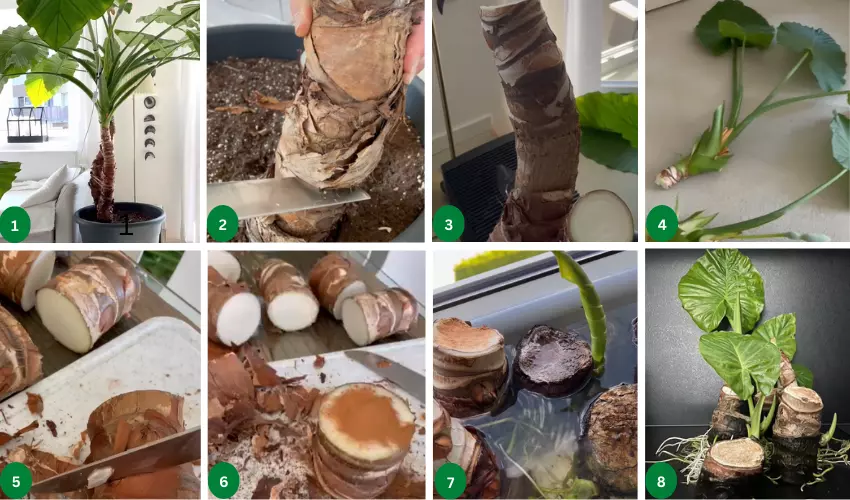

Fertilizer
The giant Taro needs regular feeding to sustain its size, fast growth, and healthy leaves. You can feed the plant with a diluted houseplant fertilizer every two weeks during the summer and spring, as these are the active growing seasons. And feed it only once a month in winter and fall because the plant goes into dormancy and doesn’t need much fertilization.
Don’t forget to water the soil before fertilizing it because if you apply fertilizer to the dry soil, because of strong chemicals, the concentration will be too high for the plant, which will result in root burn and yellow leaves.
You can use a general-purpose fertilizer or a regular houseplant one. Both work for the Alocasia Macrorrhiza. However, ensure to dilute to half-strength when applying.

Maintenance and Pruning
As the giant Taro is not a high-maintenance plant, the only maintenance it needs is the removal of discolored and dead leaves. Because such leaves make the plant unattractive, they also use the resources and energy from the plant, and trimming them off will allow the plant’s healthy growth.
Another reason for pruning is the size of the plant; if it is left uncut, it will grow up to 15 feet, covering a lot of space at home. You will need to prune it to control its shape and size.
While pruning, always use sterile tools. You can use pruning shears and large pairs of scissors but make sure they are sharp enough as blunt instruments will increase the shock experienced by the Alocasia Macrorrhiza.

Is Alocasia Macrorrhizos toxic?
Whereas the Alocasia Macrorrhiza‘s roots are edible, other parts of the plant contain calcium oxalate crystals that are toxic to humans and pets. Henceforth, it’s essential to be careful when bringing this plant home. Keep it away from children and pets to avoid any issues.
In humans, it causes irritation to the mouth, GI tract, and skin, which is why eating raw should be avoided. The only edible part is the root, which should be cooked before consumption.
Pets are more vulnerable to calcium oxalate, and if they ingest the plant, it may cause their death. In addition, your pets may experience severe irritation and pain. They may also face difficulty in breathing because of airway blockage. Immediately consult the vet if your pet comes in contact with the giant Taro.

Pests, diseases & common problems
Although Alocasia Macrorrhiza isn’t that vulnerable to pests simultaneously, it’s also not spared from their attack. The most common pests that are a threat to your plant are spider mites, aphids, and mealy bugs. These attackers are suckers from plant sap and enjoy the juices in the leaves, which result in lesions on the plant’s leaves.
So, what are the ways to deal with pests? First, you can spray neem oil or diluted soap water on the leaves. Likewise, wipe them off with cotton dipped in alcohol. Repeat this process a few times to completely get rid of the pests.
Common Problems
The common problem that Alocasia Macrorrhiza encounters is related to watering. If the plant receives less water, it will show the symptoms of stunted growth, yellowing of leaves, and browning of leaf edges. This problem occurs more in potted Alocasias.
On the other hand, overwatering is a considerable issue that can make your plant sick. If the giant Taro remains in the water for a long, it can develop root rot. In this condition, the pathogens flourish, and the base of the plant turns to rot and collapse. In addition, the leaves turn yellow because of nutrient deficiency. If you don’t treat root rot, your plant may die.
Diseases
The most common diseases your Alocasia Macrorrhiza may suffer from are multiple forms of rot, leaf spot, mildew, rust, boytris, and Xanthomonas.
You prevent these diseases, always look for the symptoms in your plant. The significant symptoms are dark or brown lesions and spots. Also, keep the environment suitable for the pant to prevent disease attacks.
Ensure you provide the right amount of water and potting mix, and the environment is warm, humid enough, and well-ventilated.

Frequently Asked Questions:
Q. How fast do Alocasia Macrorrhiza grow?
It is a fast grower and can reach a maximum height of 12 to 15 feet and 6 to 8 feet wide within 5 to 10 years. The arrow-shaped green leaves can get to the size of 3 to 6 feet long and 2 to 4 feet wide while pointing upwards.
Q. Why is my alocasia Macrorrhiza drooping?
The leading cause of drooping in Alocasia Macrorrhiza is overwatering or underwatering. Other reasons for the issue are temperature and light problems, stress, pests, and dormancy. Addressing these issues will help to recover your plant.
Q. How do you encourage Alocasia’s growth?
If you provide enough light to Alocasia Macrorrhiza, it will grow best. This is because it needs more light than other houseplants and requires 2 to 3 hours of direct morning sunlight daily. But other than that, keep the plant in the indirect bright sun, which encourages its evolution.
Q. Can you grow Alocasia Macrorrhiza indoors?
Yes Alocasia Macrorrhiza can be grown indoors in containers. Please ensure to place it in a spot with bright indirect light and space to grow to its full potential.

Final Words
Alocasia Macrorrhiza can be a fabulous addition to your plant collection. But it needs good care to blossom. This plant craves its natural habitat, and mimicking the same environment will do wonders for your plant.
If you want to lighten up your space with natural jewel, we recommend you bring this beauty home.
Happy Gardening!!
Related Posts
Calathea Orbifolia | Orbit Peacock Plant Care Guide
The Calathea Orbifolia also known as Orbit Peacock Plant and Round Leaf Calathea is a beautiful, but difficult plant with large round leaves.
Calathea Ornata Pink | Pinstripe Calathea Care Guide
Calathea Ornata also known as Pinstripe Calathea is a challenging plant with beautiful pink stripes on green leaves with violet undersides.
Calathea Medallion Roseopicta Care Guide
Calathea Medallion Roseopicta is a well-admired houseplant requiring little care to be beautiful and possesses gorgeous, oval green leaves.
Calathea Rufibarba | Velvet Calathea Care Guide
Calathea Rufibarba, also known as Furry Feather Calathea and Velvet Calathea , is famous for its bright green leaves with purple undersides.

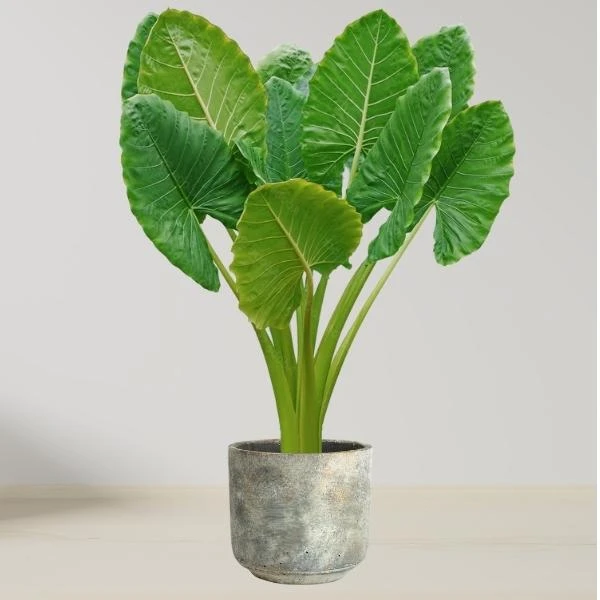



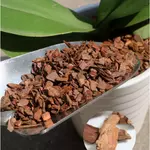

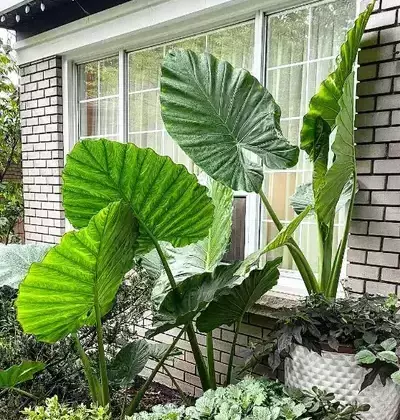
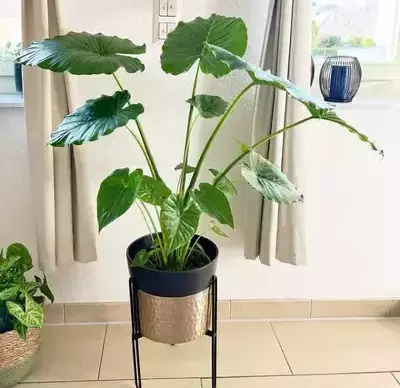

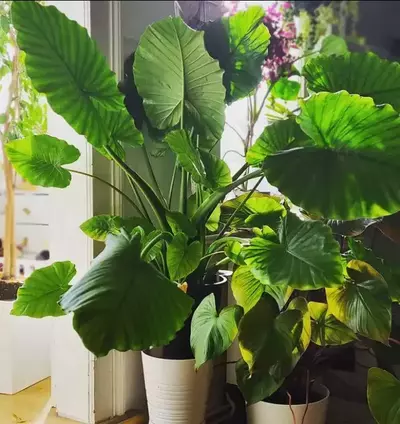
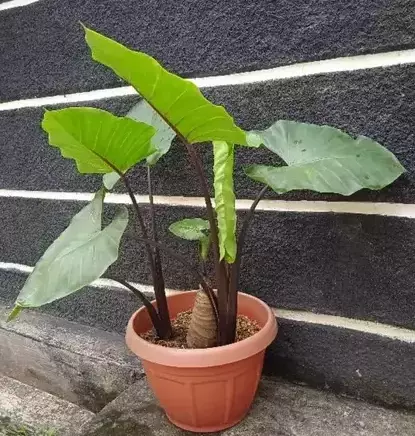
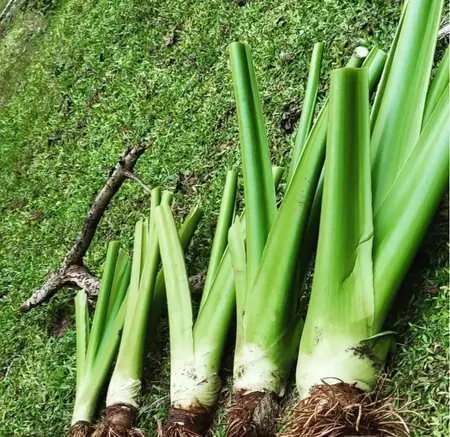

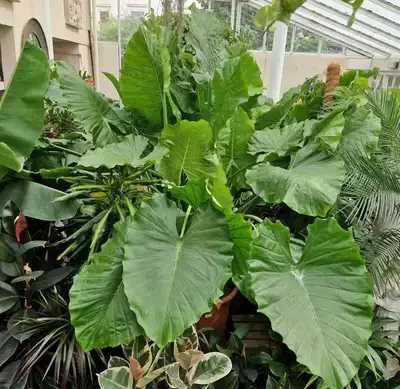

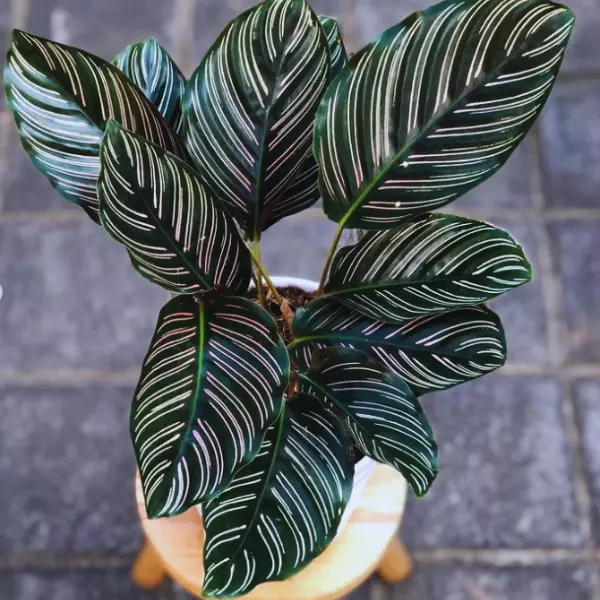


Hello there, I found your website via Google while looking for a related topic, your website came up, it looks good. I’ve bookmarked it in my google bookmarks.